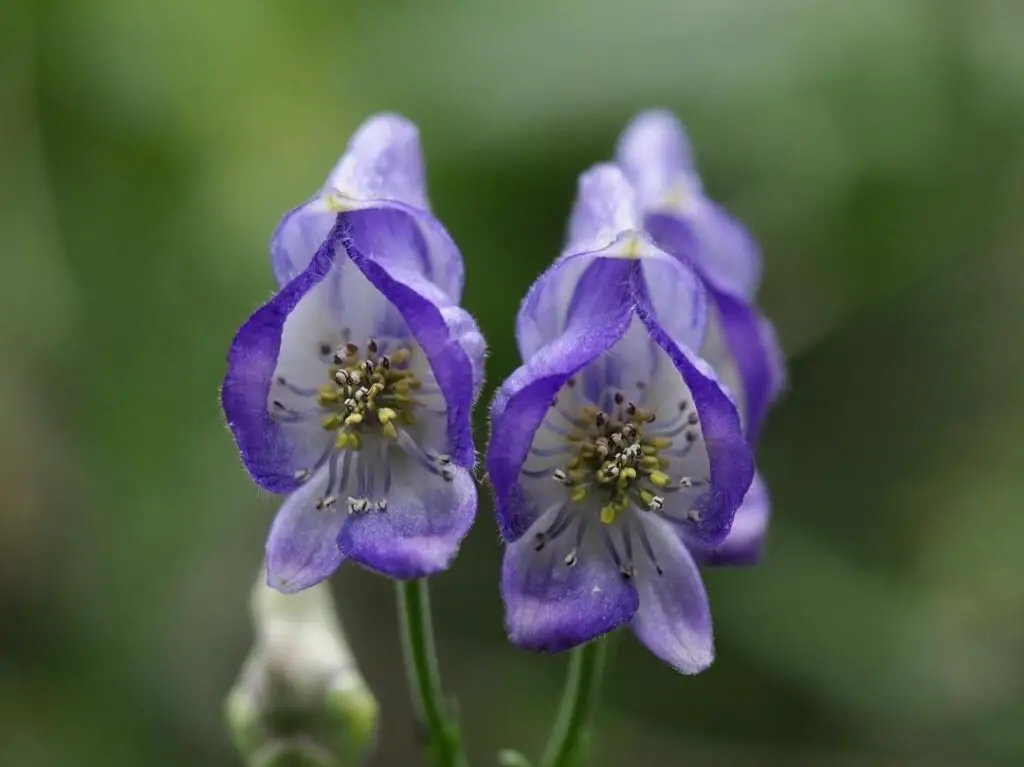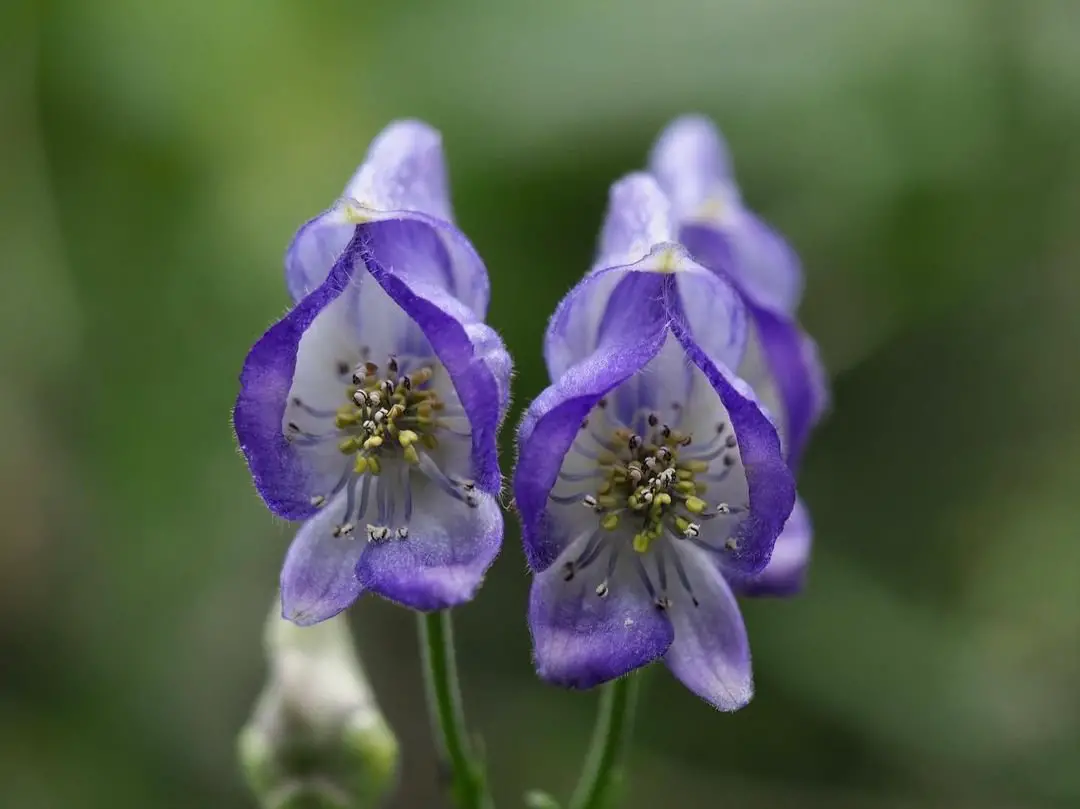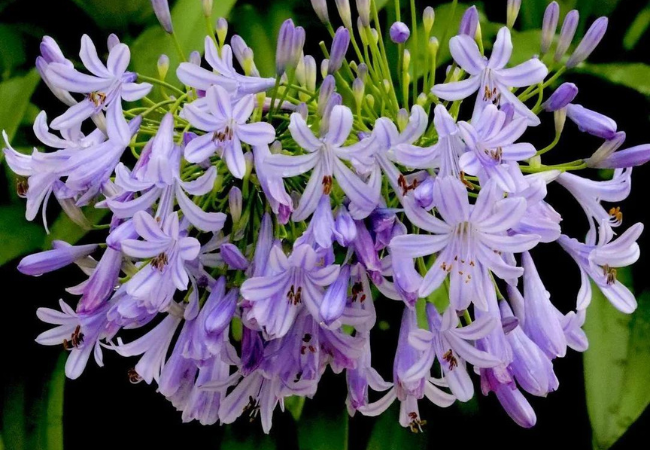Discover the fascinating world of Aconite (Monkshood) flowers: Learn about their unique beauty, growing tips and important safety precautions. Perfect for experienced gardeners and plant enthusiasts interested in this striking but potentially dangerous flower.
Have you ever seen a flower that looks like a little hood or helmet? That’s probably an Aconite, also known as Monkshood! These flowers are beautiful, but they come with a big warning sign. Let’s learn more about these interesting plants.
Here’s an easy and verified chart for Aconite (Aconitum):
| Category | Details |
|---|---|
| Botanical Name | Aconitum spp. |
| Common Name | Aconite, Monkshood |
| Plant Type | Herbaceous perennial |
| Hardiness Zone | Zones 3-7 (depending on species) |
| Sun Exposure | Part shade to full shade |
| Soil Type | Rich, moist, well-draining soil |
| Watering Needs | Regular; keep soil evenly moist |
| Growth Habit | Upright, clump-forming |
| Height/Spread | Varies by species; typically 2-4 feet tall, spread 1-2 feet |
| Special Features | Hooded flowers in shades of blue, purple, white, or yellow; toxic if ingested; deer resistant |
What is Aconite (Monkshood)?

Aconite or Monkshood, is a group of flowers in the buttercup family. They’re called Monkshood because the top petal looks like the hood monks used to wear. Another name for them is Wolf’s Bane.
How Does Aconite Look?
- Color: Usually purple or blue, sometimes white or yellow
- Shape: Tall spikes with hood-shaped flowers
- Size: Plants can grow 2 to 4 feet tall
- Leaves: Dark green and deeply cut
Types of Aconite
- Aconitum napellus: Common Monkshood
- Aconitum carmichaelii: Azure Monkshood
- Aconitum lycoctonum: Yellow Wolf’s Bane
- Aconitum ‘Spark’s Variety: A popular garden variety
Growing Aconite in Your Garden: If you want to grow Monkshood, here’s what you need to know:
- Choose a spot with partial shade.
- Make sure the soil is rich and moist but drains well.
- Plant in spring or fall.
- Water regularly, especially during dry spells.
- Be very careful when handling the plant – always wear gloves!
Important Safety Warning: All parts of Aconite plants are very poisonous. Never eat any part of the plant. Always wear gloves when handling it. Keep children and pets away from Aconite plants.
Uses of Aconite
- In the Garden: Aconite makes a striking background plant in shady areas.
- In History: People have known about Aconite’s strong effects for thousands of years. It was used in ancient hunting and warfare.
- In Medicine: Some types of Aconite are used in very small amounts in certain traditional medicines. But this is very dangerous and should only be done by experts.
- For Wildlife: Bumblebees love Aconite flowers and are one of the few insects that can pollinate them.
Caring for Aconite
- Pruning: Cut back old stems in late fall or early spring.
- Support: Tall varieties might need staking to stand up straight.
- Pests: Aconite is usually pest-free, but watch out for slugs on young plants.
- Winter care: Add a layer of mulch to protect roots in cold areas.
Fun Facts
- The name Aconitum comes from the Greek word “akonitos,” which means “without struggle,” referring to its deadly nature.
- In the language of flowers, Aconite means “beware” or “a deadly foe is near.”
- Aconite has been featured in many stories and mysteries, including Harry Potter books!
Things to Consider
- Aconite is not a plant for beginners or homes with children or pets.
- Some people get skin irritation just from touching the leaves.
- In some areas, it’s illegal to grow Aconite because it’s so dangerous.
Aconite or Monkshood, is a fascinating plant with a long history. Its unique flowers are truly beautiful, but its deadly nature means it’s not for everyone. If you decide to grow Aconite, always put safety first. Remember, sometimes the most interesting things in nature are the ones we admire from a distance!
I hope this article helps you learn about Aconite flowers. Remember, while they’re interesting to learn about, they’re not safe to grow for many people. Always prioritize safety in your garden!
For more gardening tips and plant care guides, visit usagardenhub.com.





